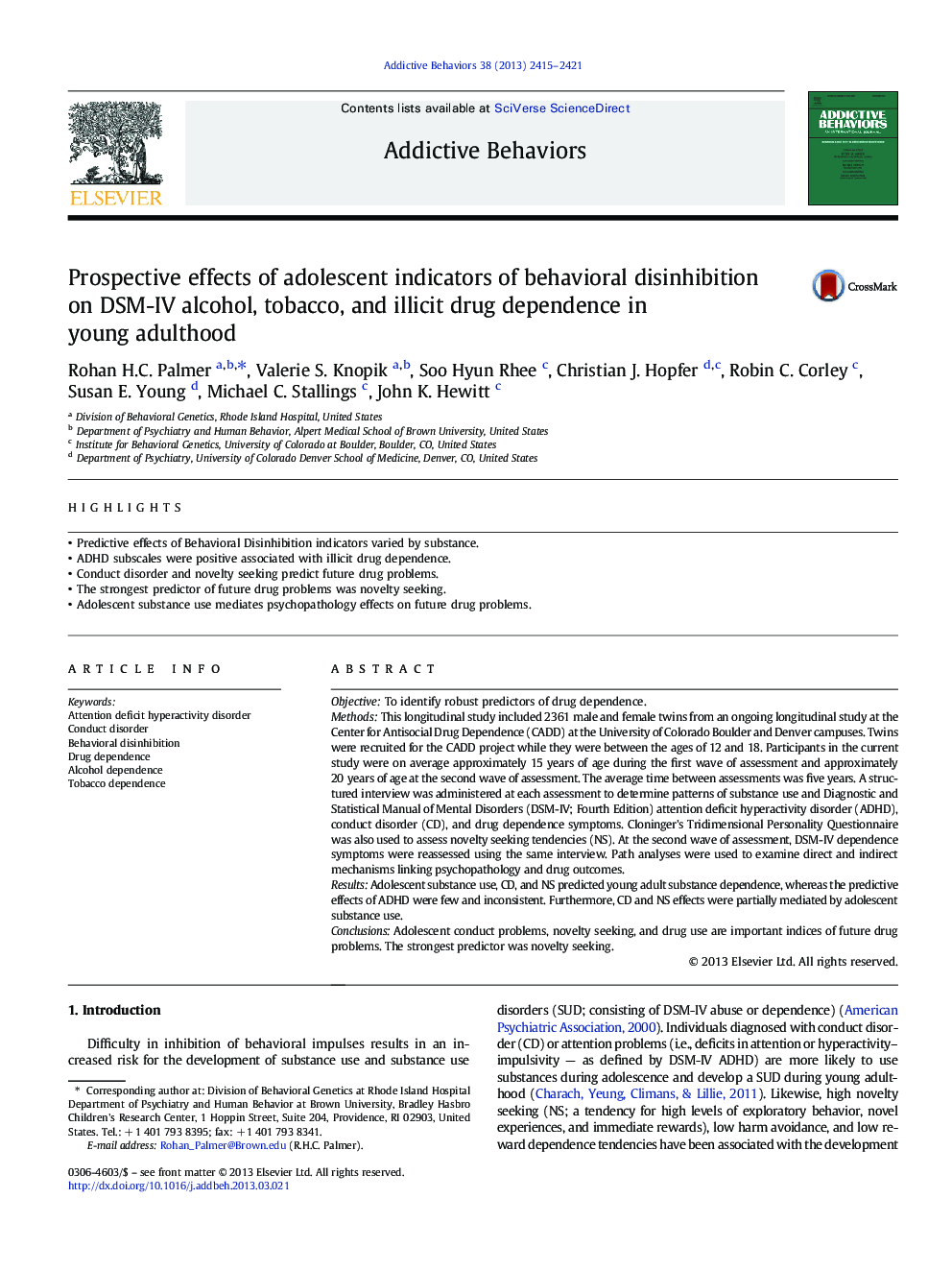| کد مقاله | کد نشریه | سال انتشار | مقاله انگلیسی | نسخه تمام متن |
|---|---|---|---|---|
| 899258 | 915369 | 2013 | 7 صفحه PDF | دانلود رایگان |

• Predictive effects of Behavioral Disinhibition indicators varied by substance.
• ADHD subscales were positive associated with illicit drug dependence.
• Conduct disorder and novelty seeking predict future drug problems.
• The strongest predictor of future drug problems was novelty seeking.
• Adolescent substance use mediates psychopathology effects on future drug problems.
ObjectiveTo identify robust predictors of drug dependence.MethodsThis longitudinal study included 2361 male and female twins from an ongoing longitudinal study at the Center for Antisocial Drug Dependence (CADD) at the University of Colorado Boulder and Denver campuses. Twins were recruited for the CADD project while they were between the ages of 12 and 18. Participants in the current study were on average approximately 15 years of age during the first wave of assessment and approximately 20 years of age at the second wave of assessment. The average time between assessments was five years. A structured interview was administered at each assessment to determine patterns of substance use and Diagnostic and Statistical Manual of Mental Disorders (DSM-IV; Fourth Edition) attention deficit hyperactivity disorder (ADHD), conduct disorder (CD), and drug dependence symptoms. Cloninger's Tridimensional Personality Questionnaire was also used to assess novelty seeking tendencies (NS). At the second wave of assessment, DSM-IV dependence symptoms were reassessed using the same interview. Path analyses were used to examine direct and indirect mechanisms linking psychopathology and drug outcomes.ResultsAdolescent substance use, CD, and NS predicted young adult substance dependence, whereas the predictive effects of ADHD were few and inconsistent. Furthermore, CD and NS effects were partially mediated by adolescent substance use.ConclusionsAdolescent conduct problems, novelty seeking, and drug use are important indices of future drug problems. The strongest predictor was novelty seeking.
Journal: Addictive Behaviors - Volume 38, Issue 9, September 2013, Pages 2415–2421